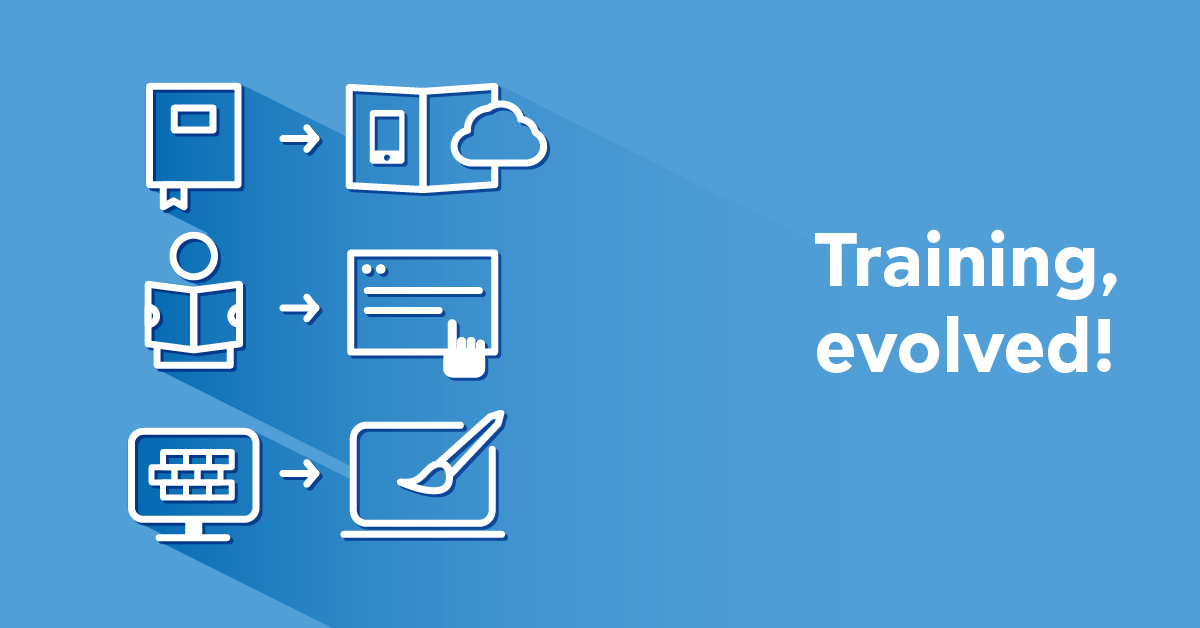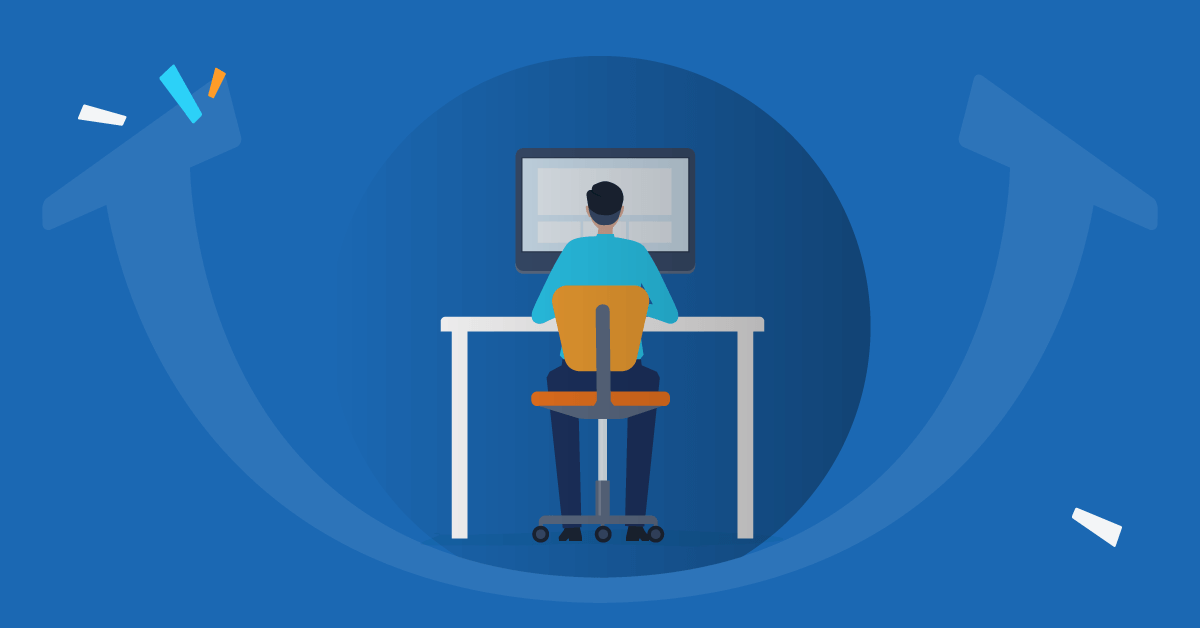Learning, whether in the classroom or a corporation, has forever changed. The days of flipping through binders and listening to a teacher or trainer lecture about a topic while clicking through a slide deck have been replaced with interactive eLearning platforms. Not only are we learning in a new way, we’re learning in a new place — LMS systems have made learning a mobile and virtual experience.
How did learning management for corporations evolve so quickly? The truth is, platforms have been growing and changing since the start.
The first sales training occurred in 1892 when John H. Primer, founder of National Cash Register, gave his sales team a book of presentations with proven outcomes. In 1941, corporate training went nationwide, when the U.S. government commissioned a job instruction training program to systematize the approach to on-the-job-training.
Then in 1961, McDonald’s established Hamburger University, the first corporate training program.
Though it may seem like computer-based training is a far cry from fast food school, the first computer-assisted instruction system, PLATO, actually beat McDonald’s to the punch when it was introduced at the University of Illinois in 1960.
The idea of using gamification in our learning management systems is also thought to be cutting edge, but did you know that using “gaming” as training was done way back in 1812 when the war game “Kriegsspiel” was developed to train Prussian and German army officers?
The right ideas have been in place for a while, but the LMS technology has finally caught up to make them possible.
LMS Today
The seeds of today’s LMS software — which focuses on an anywhere/everywhere you are and learn-as-you-like experiences — have given root to LMSs today. By the 1980’s and early 1990’s, computer-based training was gaining traction. By the turn of the century, it was the norm.
Today, the rapid rise in the use of mobile as the preference over any other device has pushed the LMS evolution into a new era once again.
For more than a century, the benefits of learning management tools have been of no question. But learning management systems are becoming increasingly innovative and competitive. Finding the one that is right LMS for your company can be challenging.
The key is to stay at the curve of future LMS evolution by choosing a provider that’s aware of, proactively thinking about, and on the cutting edge of what’s next. These emerging trends show what’s on the horizon for LMS evolution and when vetting potential providers, you should check for their awareness of these trends.
Integration with Trending Apps
Integration can be a critical piece of the puzzle as it relates to your LMS system. Employees are spending large portions of their day in applications like Slack and Salesforce, and having the ability to navigate and communicate within those tools alongside the LMS makes for a streamlined, more productive and adopted user experience.
Which business tools are becoming more popular with your employees? What apps are the source of lunch table chatter? The right LMS provider should be at the forefront of partnering with trending apps and tools for seamless integration.
Learner-Generated Content
With mini-computers in our pockets and constant access to options for self-publishing — whether it be on a third-party site, personal blog, or Facebook feed — everyone today is a content creator. Individual creators are constantly honing their skills through daily online interaction and getting increasingly good at understanding what engages those in their network.
Training content is headed in the same direction. When courses are (co)designed by the learners themselves, they’re more likely to be intuitive, engaging, and geared towards the small details that management might miss.
Look for a software provider that’s thinking about ways, or already has create ways, to further the LMS evolution and incorporate learner-generated content into your training.
Personalized Environments
A feature of business that hasn’t so much evolved as gone extinct, is the treatment of employees as carbon copies in cubicles. Today’s top workers want more — they want to be valued, challenged, and provided with pathways for growth as individuals.
The next LMS evolution meets that need by creating the opportunity for personalized learning environments. This makes it possible for every employee to log into their individualized dashboard and see coursework based off their interests, self-tracking reporting, and opportunities for stretch work. Top LMS providers should be talking about how they’re creating personalization in their systems.
Straightforward Pricing
Less of a technological innovation and more of a business trend, successful companies are moving to straightforward pricing models that do away with hidden fees. Why? Customers hate them. Even if the base price increases, they’d rather pay more than get hit with a cost later.
As you’re shopping for an LMS, it’s important to look for providers that make clear the total cost of ownership. Will there be hosting, licensing, or upgrade fees? Straightforward LMS pricing is a good indicator of a provider that’s staying up-to-date with what customers want.
The LMS Evolution Goes on
Hamburger University still exists. But it’s gone from graduating 15 McDonald’s managers a year to 7,500. How is such growth (and learning for those who can’t attend) possible? eLearning!
The LMS evolution has made it possible to design training that’s more powerful and further reaching than ever before. And it’s just getting started.
About the author: Jessica Barrett Halcom is a writer for TechnologyAdvice.com, with specializations in human resources, eLearning, and recruiting. She holds a bachelor’s degree from the University of Wisconsin, Green Bay and currently lives in Nashville, TN.



